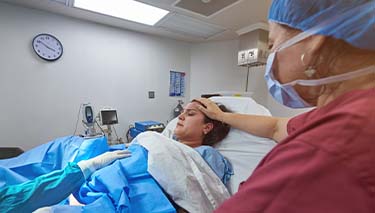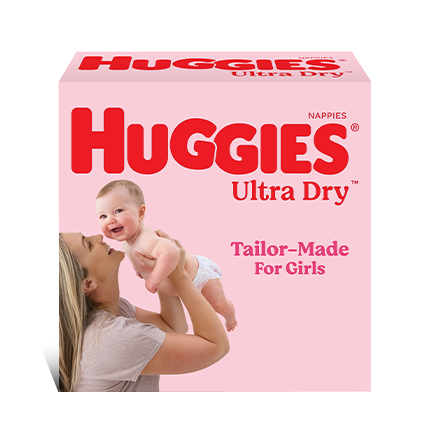The first stage of labour is usually the longest of all the stages of labour. If this is your first baby, expect your labour to be longer than it will be if you have a second or subsequent births. Early labour can be unpredictable and sometimes hard to identify. Though the average labour for first-time mothers is generally around 12-14 hours, although anything from two to twenty hours is also considered normal.
The first stage of labour is often described as having three distinct phases.
Remember, every woman and labour are unique. The following information is a guide. Speak with your maternity care provider for individual guidance and recommendations.
Early phase of labour
In the early labour phase, contractions are comparatively mild and start at around thirty minutes (or longer) apart. Over time often a few hours, contractions become closer together and more intense, building in frequency until they are around five minutes apart. Most women are able to labour comfortably at home during this time; there is time to recover between each contraction and plan for the next stage.
You will be able to prepare for the trip to hospital and contact your maternity care provider if you need to. Keep in touch with your caregiver by phone at this stage for advice and guidance about when you might be ready to make your journey.
Moving around freely is often the best way to cope with labour at this stage; many women find that walking around and breathing through the contractions is effective in the early phase. Ask your partner for support if you want this.
Although you may want to conserve energy, your labour may progress more quickly if you try by moving around as much as possible when you're in early labour.
Sometimes, early labour may go on for many hours, so it's also fine to have some rest where you can. Make sure you don t lie flat on your back; this can cause pressure on the large blood vessels which supply your baby with oxygen. Always lie and sleep on your side.
In this early phase of labour, you may want to eat a light snack easily digested carbohydrates are best, avoid fatty or acidic foods. It's very important to keep your fluids up, but stick with water and non-sugary drinks.
Progressing from early labour to active labour is unique for every woman. There is no one duration of time which applies every time. Some women feel they are in early labour for a day or more, others say they go straight into active labour once their waters have broken.
Active phase of labour
In the active phase of labour, contractions generally come more frequently, around four to five minutes apart and build to up to a minute or so each time. At this point, it is wise to travel to hospital.
Active labour may last for a few hours as the cervix dilates further.
Most women cope best with this stage of labour by moving into whatever position feels best for them at the time. Sometimes one position will work well for a few contractions and then you may need to move into a different position.
During the active phase of labour, upright positions with hip-swaying movements can help. Gravity assists the baby to move deeper into the pelvis and for the cervix to thin and dilate.
Positions with some support are often helpful, like leaning against a wall or leaning forwards supported by a partner, or kneeling on all fours. Do whatever feels right for you.
In the active phase of labour, most women are not able to walk or talk during contractions and usually want to spend the time between contractions focusing on their labour and preparing for the next contraction wave . Experiencing active labour can take a lot of focus and concentration.
Many women find that breathing can help them to manage the intensity of their contractions; using deep abdominal breathing through the beginning of the contraction, with sighing-out breathing over the peak of the contraction. It may help to focus on breathing slowly and calmly to relax between contractions.
Transition
The end of the first stage is marked by movement into the transition phase.
Contractions will be longer, more intense and closer together usually lasting for around 90 seconds and two or three minutes apart. The transition stage is generally described as being from when the cervix is 10 cms dilated (fully) to when the baby is born.
This is a very intense period in labour and women can report feeling overwhelmed, scared or angry. It's not uncommon to be shaking and nauseous, and even feel very hot or cold at this time.
Fortunately, transition tends to last for a much shorter time than other phases of labour anything from ten minutes to an hour or two is common. It is during this time that the cervix will dilate to ten centimetres.
By the end of first stage, the cervix is fully open; enough to allow the baby to pass through and into the birth canal (the vagina).
Labour tends to speed up as it progresses. For many women, it takes far less time for the cervix to dilate its second five centimetres, when compared to the first five.
During labour, your caregiver will keep monitoring your baby's response to your contractions, usually by listening and recording their heart rate.
This can be done by regularly checking against your abdomen, using a special instrument called a Pinard stethoscope; or you may wear a belt around your abdomen, linked to an electronic fetal monitor (EFM) that will display your baby's heart rate and may also record it as a printout. Sometimes an internal monitor using a small electrode clipped onto the baby's scalp will be used and signals transmitted to the EFM.
Many women, particularly if they are able to move around through labour, find electronic fetal monitoring through a belt uncomfortable and restrictive. Speak with your maternity care provider about alternatives.
It's important during the long first stage of labour to make sure that the labouring woman is as comfortable as possible and feels secure and supported.
Having your partner and/or a trusted close friend as well as a professional caregiver can help enormously, particularly if they have been well-briefed and have perhaps attended childbirth preparation classes with you.
Edited and reviewed by Jane Barry, Midwife and Child Health Nurse July 2021.


Last Published* May, 2024
*Please note that the published date may not be the same as the date that the content was created and that information above may have changed since.





















